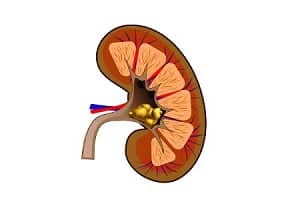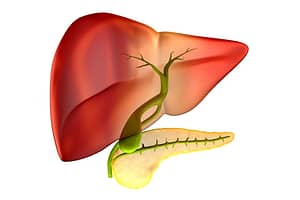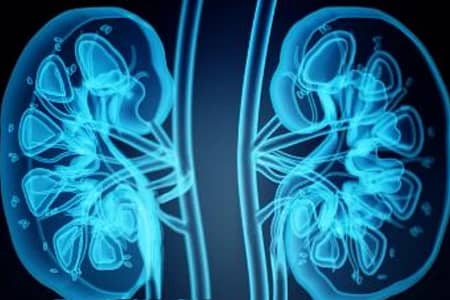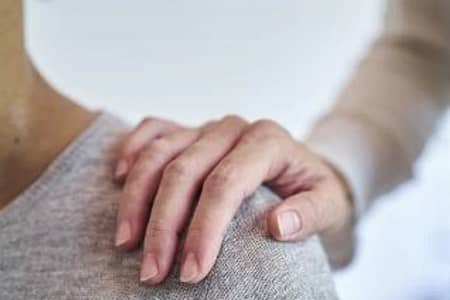When is Kidney Stone Surgery Needed?
Kidney stone removal surgery may be needed if it:
- Does not pass through urine after a reasonable time and causes constant pain.
- Is caught in a difficult place and is too large to pass naturally.
- Blocks the flow of urine.
- Causes a urinary tract infection (UTI).
- Damages kidney tissue leading to constant bleeding.
- Has grown larger, as seen on follow-up x-rays.
Earlier, surgery to remove a kidney stones was necessary, which had a recovery time of 4 to 6 weeks. However, treatment for these stones has greatly improved now, and many options do not require major open surgery and can be performed on an outpatient basis.
What are the Different Surgical Procedures to Remove a Kidney Stone?
There are four types of kidney stone removal surgeries that you can undergo. The procedure your doctor will recommend depends on various factors such as the size of stones, location of stones, your health conditions, and your preference. These four procedures include:
- Shockwave Lithotripsy (SWL)
- Ureteroscopy
- Percutaneous Nephrolithotomy (PCNL)
- Open Surgery
Read About Kidney Stones (Renal Calculi): Causes, Symptoms, Diagnosis, Treatment
Shockwave Lithotripsy (SWL)
Shockwave Lithotripsy (SWL) is the most common kidney stone removal procedure. It is usually performed for small or medium-sized stones. During this procedure, no cuts are made to your skin.
You will first get a drug to reduce any pain and will be asked to lie on a table. Your doctor will first locate the stones in your kidney with the help of an x-ray or ultrasound, and then he/she will aim high-energy shock waves at your kidney from the outside. These shockwaves travel through your skin and break up the stone into small pieces.
Your doctor may also place a tube called a stent into your ureter. This tube dilates your ureter around itself to make way for broken pieces of stone to pass. This procedure takes almost an hour, and you can go home on the same day. After the procedure, you will be suggested to drink plenty of water to flush the stone pieces out in your urine.
This procedure removes kidney stones in about half of the people. However, if it doesn’t work, you might need to go through the same procedure again.
SWL causes side effects such as blood in your urine or cramps. Serious complications are rarely seen in this procedure and may include:
- Infection
- Damage to the kidney
- Bleeding around the kidney
- A stone blocking the urine flow.
Ureteroscopy
This procedure is useful against stones in the kidneys and ureters. During this procedure, your doctor uses a thin, flexible tube with a scope mounted to find and remove stones. It is non-invasive, and generally, you’ll sleep through this procedure. You will be able to go home on the same day of procedure.
Your doctor will pass the scope into your kidney through your bladder and ureter. He/she will use a small basket to remove small stones. In the case of larger stones, a laser is passed through the scope to break them up.
Your doctor may also place a stent in your ureter to help drain the urine from your kidney into your bladder. You will need to revisit your doctor after 4 to 10 days to have the stent taken out. However, if you are taking the stent out by yourself, you must follow the instructions given by your doctor.
Possible complications of ureteroscopy may include infection, bleeding, and narrowing of the bladder.
Read:
How Does the Size of a Kidney Stone Matter?
Percutaneous Nephrolithotomy (PCNL)
Percutaneous nephrolithotomy is a procedure recommended to remove a stone that is quite larger and is located in a place where SWL is not useful in removing them.
During this procedure, a tiny incision in made in your back to create a tunnel that reaches your kidney. Then your surgeon will locate and remove the stone using an instrument known as a nephroscope. For larger stone, an ultrasonic energy probe may be used to break them into smaller pieces. You may have to stay in the hospital for a few days after this procedure. You will have a small tube called a nephrostomy tube left in your kidney during the healing process.
This procedure allows the surgeon to remove some of the stone fragments directly instead of expecting them to pass naturally. The risk with this kind of surgery may include bleeding, infection, and damage to other organs such as the bladder, bowel, ureter, kidney, or liver.
Open Surgery
Open surgery is rarely performed for kidney stone removal these days. However, if your stone is huge or it can’t be removed or crushed with other treatments, kidney stone operation might be a required option. Open surgery or operation may also help if:
- You are experiencing unbearable pain.
- The stones are stuck in your ureter and blocking your urine flow.
- You have an infection, or you are bleeding.
You will be made unconscious during the procedure by giving some medication. An incision is made on your side and into your kidney to remove the stone through the opening. A stent may be placed afterward in your ureter to drain the urine. This procedure may take as long as 4-6 weeks to heal properly, and you will be asked to stay in the hospital for a few days.
Frequently Asked Questions
When is surgery recommended for kidney stones?
Surgery for kidney stones may be recommended if the stones are too large to pass naturally, causing persistent pain, or if they block the urinary tract, leading to complications such as urinary tract infections or kidney damage.
What are the different surgical procedures available for treating kidney stones?
Common surgical procedures for kidney stones include extracorporeal shock wave lithotripsy (ESWL), ureteroscopy with laser lithotripsy, percutaneous nephrolithotomy (PCNL), and open surgery (rarely performed). The choice of procedure depends on factors like stone size, location, and patient health.
Is surgery the only option for treating kidney stones?
No, surgery is not always necessary for treating kidney stones. In many cases, smaller stones can be passed naturally with conservative treatments such as pain management, hydration, and medication to facilitate stone passage.
What are the potential risks and complications of kidney stone surgery?
Potential risks and complications of kidney stone surgery include bleeding, infection, injury to surrounding organs or tissues, and recurrence of kidney stones. However, these risks are relatively low when performed by experienced surgeons.
What is the recovery process like after kidney stone surgery?
Recovery from kidney stone surgery varies depending on the type of procedure performed and individual factors. In general, patients may experience some discomfort or urinary symptoms initially but can usually resume normal activities within a few days to weeks following surgery.







